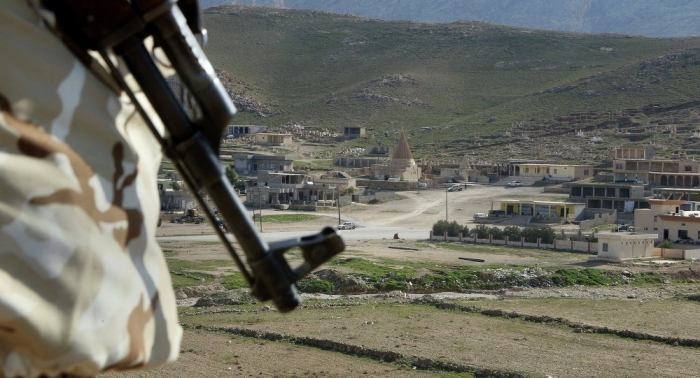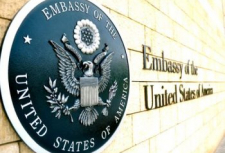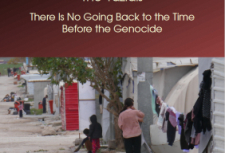Yazidis: Attempts to recover and struggle to survive in post-ISIS era

Katia Zagoritou
Part - 3
The reform trend, aligned with the need for modernization, is linked not only to the attempts to preserve Yezidism but also to reassert the Yazidi religious identity following the 2014 ISIS attack. That does not come though without implications, neither does it imply unanimity. For instance, voices have increased among Yezidis about the sacred texts’ collection into a new “holy book” (Yazidism is an oral religion), accessible thus to literate Yazidis; that would have though a great impact on caste system, challenging the caste of the spiritual masters as the sole source of authority. Moreover, the disunity and the fragmentation of the community, which renders its project uncertain, stems from the strict hierarchical caste system, composed by sheikhs, pirs (spiritual masters) and murids (disciples), alongside the different political and religious affiliations among the community.
The impact of the rivalry between the central government and KRG, which have attempted to define Yazidis’ identity according to their interests hitherto, has been major on the community. Yet, Yazidis emphasize now their religious identity in order to define themselves as a distinct group and not as component of a larger ethnic one, particularly following the KRG’s stance since 2014. That would allow them even to claim their right to self-rule according to the Iraqi Constitution. In this sense, the establishment of military units comes to underline their identity redefinition as well as their objective to defend themselves and to appear as political and military force.
However, the militarization does not translate into homogeneity; in contrast, the separate militia’s creation reflects the different fractions, backed by different sponsors, within the com- munity underlining thus its disunity and entailing danger for intra-communal conflict considering the contrasting interests of their patrons. Indeed, two main militias appear to exist: the Protection force of Ezidxan (HPE), formerly backed by the central government and since 2017 part of Peshmerga and the PKK-linked Sinjar Resistance Units (YBS) with the distinct Sinjar Women’s Units (YJS), while some Yazidis have joined the Popular Mobilization Units (PMU), backed by Baghdad. The YBS control currently Sinjar; that has raised tension within the community and the KRG and has already led to confrontation between Iraqi army and YBS forces, despite their alleged coordination.
Tags: #yazidisinfo #aboutyezidi #newsyezidi #genocideyezidi
Yazidis: Attempts to recover and struggle to survive in post-ISIS era

Katia Zagoritou
Part - 3
The reform trend, aligned with the need for modernization, is linked not only to the attempts to preserve Yezidism but also to reassert the Yazidi religious identity following the 2014 ISIS attack. That does not come though without implications, neither does it imply unanimity. For instance, voices have increased among Yezidis about the sacred texts’ collection into a new “holy book” (Yazidism is an oral religion), accessible thus to literate Yazidis; that would have though a great impact on caste system, challenging the caste of the spiritual masters as the sole source of authority. Moreover, the disunity and the fragmentation of the community, which renders its project uncertain, stems from the strict hierarchical caste system, composed by sheikhs, pirs (spiritual masters) and murids (disciples), alongside the different political and religious affiliations among the community.
The impact of the rivalry between the central government and KRG, which have attempted to define Yazidis’ identity according to their interests hitherto, has been major on the community. Yet, Yazidis emphasize now their religious identity in order to define themselves as a distinct group and not as component of a larger ethnic one, particularly following the KRG’s stance since 2014. That would allow them even to claim their right to self-rule according to the Iraqi Constitution. In this sense, the establishment of military units comes to underline their identity redefinition as well as their objective to defend themselves and to appear as political and military force.
However, the militarization does not translate into homogeneity; in contrast, the separate militia’s creation reflects the different fractions, backed by different sponsors, within the com- munity underlining thus its disunity and entailing danger for intra-communal conflict considering the contrasting interests of their patrons. Indeed, two main militias appear to exist: the Protection force of Ezidxan (HPE), formerly backed by the central government and since 2017 part of Peshmerga and the PKK-linked Sinjar Resistance Units (YBS) with the distinct Sinjar Women’s Units (YJS), while some Yazidis have joined the Popular Mobilization Units (PMU), backed by Baghdad. The YBS control currently Sinjar; that has raised tension within the community and the KRG and has already led to confrontation between Iraqi army and YBS forces, despite their alleged coordination.
Tags: #yazidisinfo #aboutyezidi #newsyezidi #genocideyezidi

























